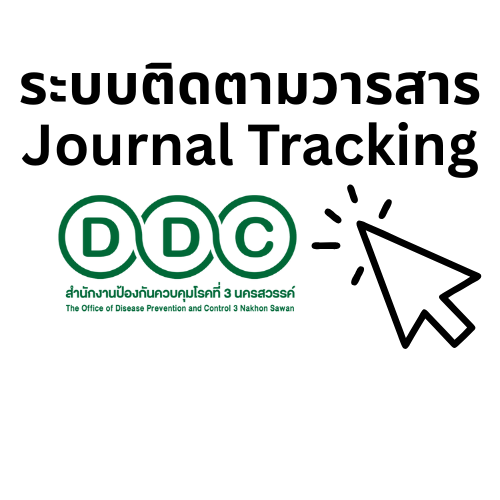Assessment of disability and social - economic problems and needs for rehabilitation of leprosy victims in Chai Nat Province.
Keywords:
Leprosy victims, Needs for rehabilitation, Assessment of disabilityAbstract
This research was a survey research aimed to studying the disability, socio-economic problems and the need for rehabilitation in leprosy victims. Data were collected during February 1-16, 2560, in Chai Nat Province, with the instruments of Raj PrachaSamasai Instituteand analyze the data by number and percentage.The results of the study found that the majority of leprosy victims are female, rather than males, over 60 years old, graduated primary and non-occupational and average monthly income of family is between 2,000 - 5,000 Baht. The leprosy victims do not use disability aids because of access, defects and the improper use of assistive devices. Glasses and stave are the most common equipment for leprosy victims. In addition, leprosy victims have numbness in the hands and feet which it is difficult to walk or up the stairs. The majority of leprosy victims have a level 2 disability, according to the World Health Organization. The eyes, hands and feet were disabled and those with disabilities and those with wounds in the body. Including, the feeling was stigmatized such as do not dare leave home because of embarrassment, people and society do not accept.Based on the state of the problem, the information was provided to the rehabilitation plan and provides the necessary support which collaborated with relevant agencies to assist.
References
2. World Health Organization [WHO]. WHO expert committee on leprosy. Geneva: World Health Organization; 2012.
3. สำนักงานป้องกันควบคุมโรคที่ 3 นครสวรรค์. แผนยุทธศาสตร์โรคและภัยสุขภาพและระบบควบคุมโรค 5 ปี (2560-2564). เอกสารอัดสำเนา. 2559.
4. กรมควบคุมโรค. คู่มือการวินิจฉัยและการรักษาโรคเรื้อน. พิมพ์ครั้งที่ 7. กรุงเทพฯ: การศาสนาบ้านบาตร; 2553.
5. กรมควบคุมโรค. การให้คำปรึกษา โรคเรื้อนและวัณโรค สำหรับบุคลากรสาธารณสุขในหน่วยบริการสุขภาพ. พิมพ์ครั้งที่ 2. กรุงเทพฯ: การศาสนาบ้านบาตร; 2548.
6. กิตติ กิตติอำพน. ความพิการในผู้ป่วยโรคเรื้อน. กรุงเทพฯ: โรงพิมพ์แห่งชุมชนสหกรณ์การเกษตรแห่งประเทศไทย; 2538.
7. โกวิท คัมภีรภาพ. โรคเรื้อน (Leprosy update). วารสารสมาคมศิษย์เก่าสถาบันโรคผิวหนัง. 2553;33:35-50.
8. ปริญญา โตมานะ และระวิวรรณ ศรีสุชาติ. ความรู้สึกมีคุณค่าในตนเองของผู้สูงอายุและปัจจัยเกื้อหนุนอื่นๆ. วารสารสุขภาพจิตในประเทศไทย. 2548; 13:28-37.
9. UCHA (Internet). 2017 (cited 2017 Jul 5). Available from: http://103.40.150.227
10. กรมควบคุมโรค. สถาบันราชประชาสมาสัย. เครื่องมือสำรวจสภาพความพิการ ปัญหาเศรษฐกิจสังคม และความจำเป็นในการฟื้นฟูสภาพในผู้ประสบปัญหาจากโรคเรื้อน.
Downloads
Published
How to Cite
Issue
Section
License
Copyright notice
Article published in the Journal of Disease and Health Risk DPC.3 Nakhon Sawan. It is considered a work of academic research and analysis as well as the personal opinion of the author. It is not the opinion of the Office of Disease Prevention and Control 3, Nakhon Sawan. Or the editorial team in any way Authors are responsible for their articles.
Privacy Policy
Name, address and e-mail address specified in the Journal of Disease and Health Risk DPC.3 Nakhon Sawan. It is used for identification purposes of the journal. And will not be used for any other purpose. Or to another person.








